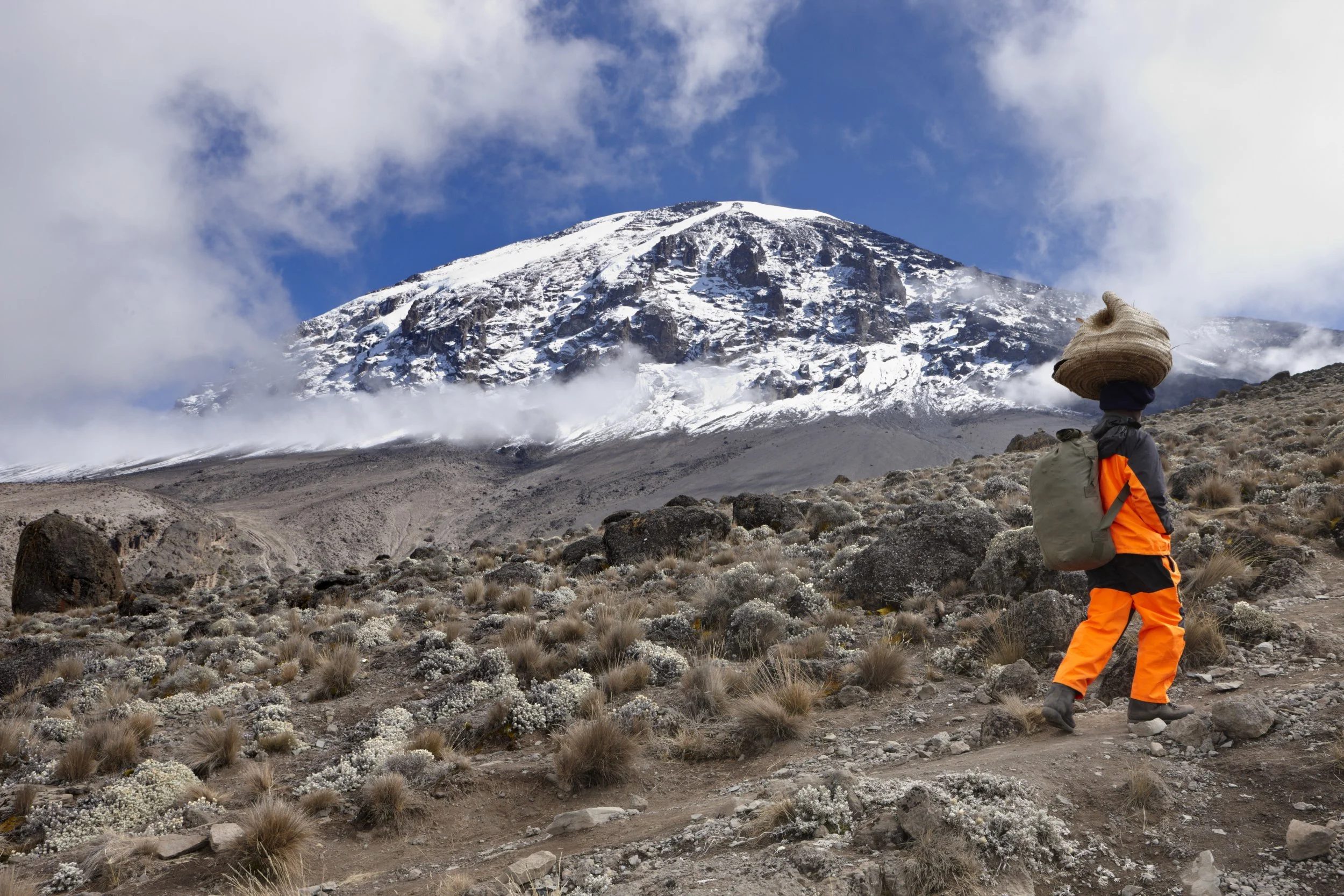Dealing with Altitude Sickness on Mount Kilimanjaro
Climbing Mount Kilimanjaro is an exciting and amazing experience; the unique mountain allows you to reach a very high altitude and summit as a walk-up, without any technical climbing skills. However, as with any tall peak, especially as one of the Seven Summits, there can be dangers associated with the thin air on Kilimanjaro - specifically, reduced air pressure and lower oxygen levels. Preventing altitude sickness is the most important part of your trek up Mount Kilimanjaro.
Our guides are all Wilderness First Responder certified, and all have extensive experience working with climbers of varying levels to identify the signs of altitude sickness. We also carry emergency oxygen on all climbs, and if you’re going to overnight at Crater Camp, which is at an altitude of 18,865 feet/5,750 meters, we also add a portable altitude chamber. We prioritize oxygen saturation checks as part of a daily health check.
The best way to prevent altitude sickness is to ascend very gradually. Guides will often remind you, ‘pole pole’ which means slowly slowly, even if you feel strong and capable of a faster pace.
That said, you must be very careful during your trek and be aware of physical indicators, and communicate regularly with our expert guides. There’s no better way to prepare for high altitude except being at high altitudes, and spending time gradually getting higher up the massive Mount Kilimanjaro - read more about how we can help you prepare for the climb.
The best way to combat altitude sickness is to descend to a lower altitude. Our guides can best advise you on descending and sleeping at a lower altitude before attempting to go higher again; you must follow guide directives around treatment and dealing with altitude sickness, as majority of the team have dealt with these situations before and know how to correctly help. We can usually support route modifications as appropriate so you have the best chance of continuing your Kilimanjaro trek safely. You should also avoid alcohol, and drink plenty of fluids. There’s also some medication available, including Acetazolamide (Diamox), which helps with breathing and reducing symptoms of altitude sickness. This medication works optimally when taken in advance.
As with any physical activity, you should consult your doctor for advice and necessary medication as you prepare for your Kilimanjaro trek.
More details are available at these pages:
Medline Plus - for causes, symptoms and treatments.
CDC Travelers health - tips & tricks for travelers, including risks and what to bear in mind when reaching the summit.


